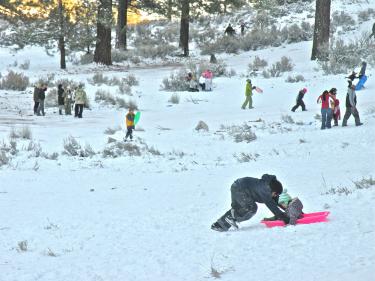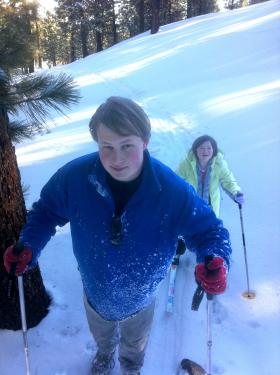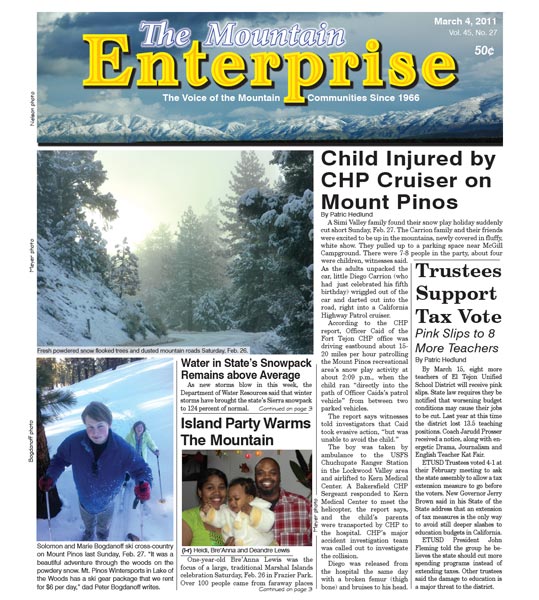
Image 1 of 2
Snowpack in the mountains of Northern California contribute to the aqueducts that feed California's cities and farmers, but local snowfall on Mount Pinos recharges our local aquifer, from which the current population draws all of its water.
Image 2 of 2
Solomon and Marie Bogdanoff ski cross-country on Mount Pinos last Sunday, Feb. 27. “It was a beautiful adventure through the woods on the powdery snow. Mt. Pinos Wintersports in Lake of the Woods has a ski gear package that we rent for $6 per day,” dad Peter Bogdanoff writes.
As new storms blow in this week, the Department of Water Resources said that winter storms have brought the state’s Sierra snowpack to 124 percent of normal. DWS said on Tuesday that its hydrologists’ third set of manual and electronic readings of the snowpack this winter confirm the level is now well above normal.
On January 28, at the second manual survey, the snowpackwater content was significantly lower in all sections of the state. California’s reservoirs are fed both by rain and snowpack runoff. The water supply was still recovering from the drought of 2007-2009.
DWP said that most of the state’s major reservoirs are now above normal storage levels for this date.
So far, Mountain Community residents are all receiving their water from locally producing wells, many maintained by mutual water districts, such as the Lebec County Water District, Mil Potrero Mutual Water Company, Krista Water Company, Frazier Park Public Utilities District, Golden Valley Mutual Water Company and the Lake of the Woods Mutual Water Company.
Plans for proposed developments such as Tejon Mountain Village (TMV) and Centennial however say they plan to rely on water sources which do come originally from these state water project aqueducts. TMV would be drawing on water from a water bank which receives its water from the water project during “surplus” times.
Even with these positive readings, DWP will be allocating only 60 percent of the water currently being requested by cities and farmers. Last year they could allocate only 50 percent.
This is part of the March 04, 2011 online edition of The Mountain Enterprise.
Have an opinion on this matter? We'd like to hear from you.


